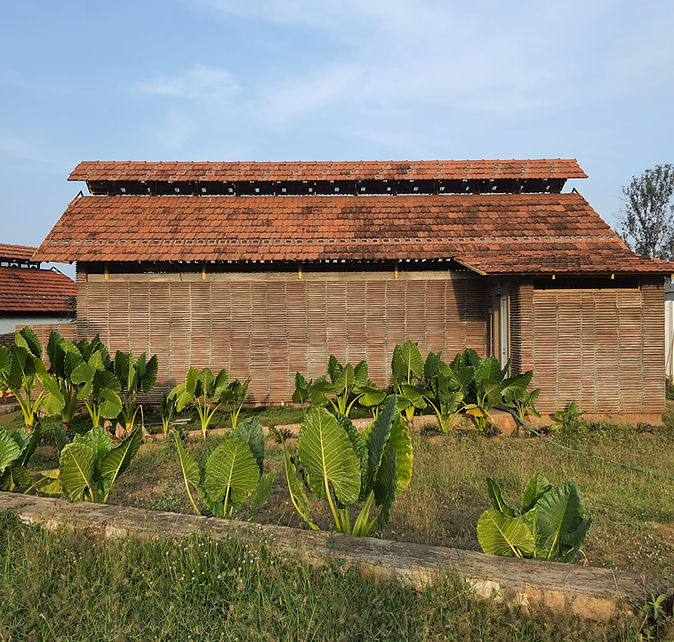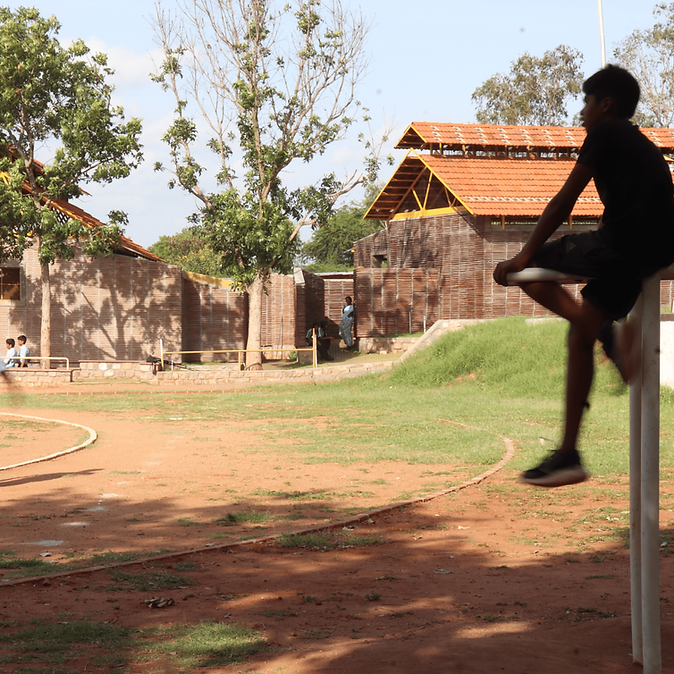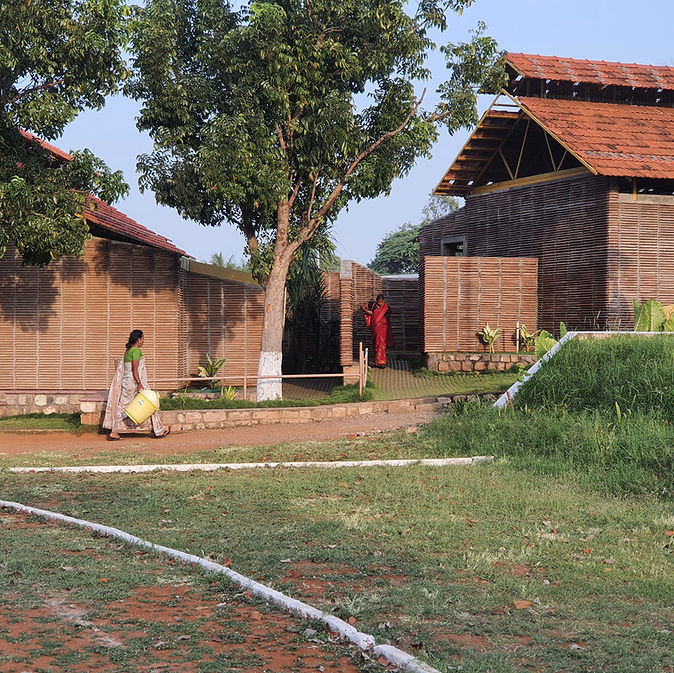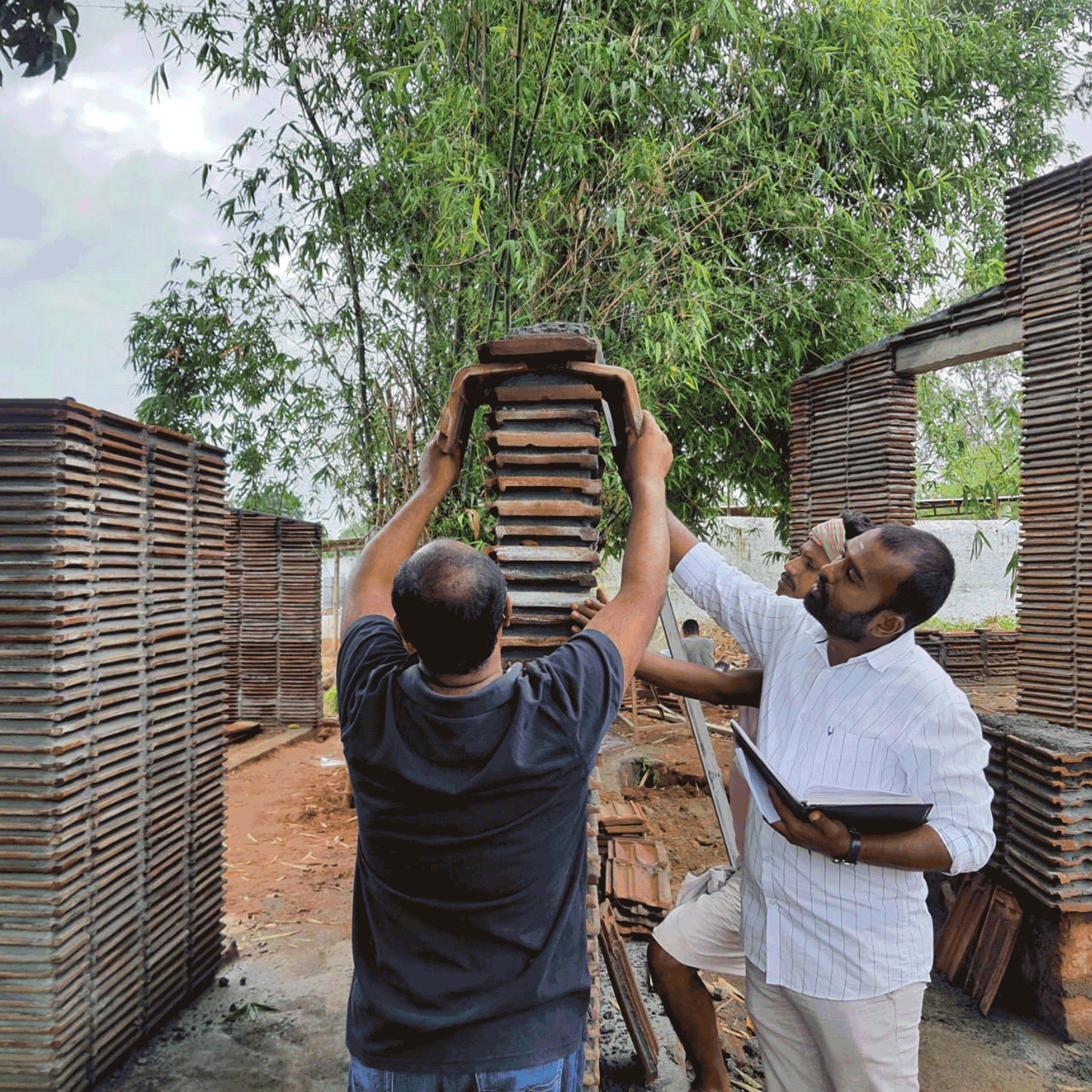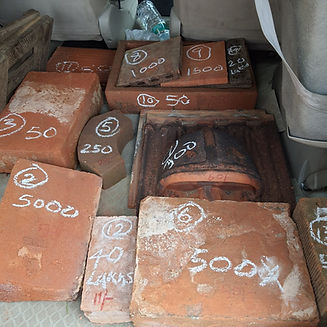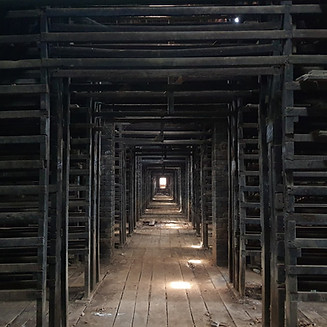Terracota Toilet, Pollachi

Usually hidden and tucked away, we are often raised around societal notions that naturally make toilets repulsive. These taboos often reflect the way we see ourselves. The mundanity linked to the repetition of activities in these spaces also tend to create a bias. The toilet block is an attempt to expand everyday notions, particularly those that offer an alternate way of looking at our most intimate, basic selves and yet have larger implications.
Most urban schools in India do not have clean toilets, especially the ones in semi-rural and rural areas. The site is located in Zaimin Uthukali near the district town of Pollachi, Tamil Nadu, and faced massive problems of hygiene and over-crowding.The vision naturally expanded into creating new lens of 'respite' for these spaces of 'cleansing' for all membersof the community.
We encountered dilapidated mangalore tile factories lined up along the river. Lost to modern roofing sheets, these vast properties were in a dire state. What was waste for a dying industry, quickly brought associations and sense of character for the toilet block. This led to a collaboration with Josephbhai, a sculptor turned contractor-which became a driving force for the project.We encountered dilapidated mangalore tile factories lined up along the river. Lost to modern roofing sheets, these vast properties were in a dire state. What was waste for a dying industry, quickly brought associations and sense of character for the toilet block. This led to a collaboration with Josephbhai, a sculptor turned contractor-which became a driving force for the project.
The toilet block built with Mangalore tiles, forms the backdrop for a playground where hundreds of students play everyday. From the school, a grassy ramp leads one to the built gradually scaling it down towards its indirect entrance. The many tones of reused Mangalore tiles, from a variety of batches naturally resemble the red soil, almost as if the block has always been a part of the landscape. Beyond the gloss of metal and glass, it hopes to create familiar associations to the earth for the children of Uthukali. These renewed associations also offer opportunities to slow down, pause and be aware of the very act of cleansing.
The two blocks surround an internal courtyard to exaggerate this sense of pause. High volumes ensure that the space is well lit and ventilated. Deep grooves create micro-shade, self cool the walls and express each Mangalore tiles vividly. This inevitably exaggerates the texture that not only changes with proximity but even as the sun moves through the day. The intent of creating a 'space of respite' is re-established as the facade animates the breeze with the moving shadows of a tree, encouraging one to pause and rejoice in the gift of nature.
Finally, it's nurturing awareness. To observe nuances of light, notice flowers bloom and leaves age. To feel the rains pour, smell the wet earth and hear the birds sing. Allowing the building, to become an immersive observatory of nature.
"Where mundane notions of life can be celebrated at an early age."


